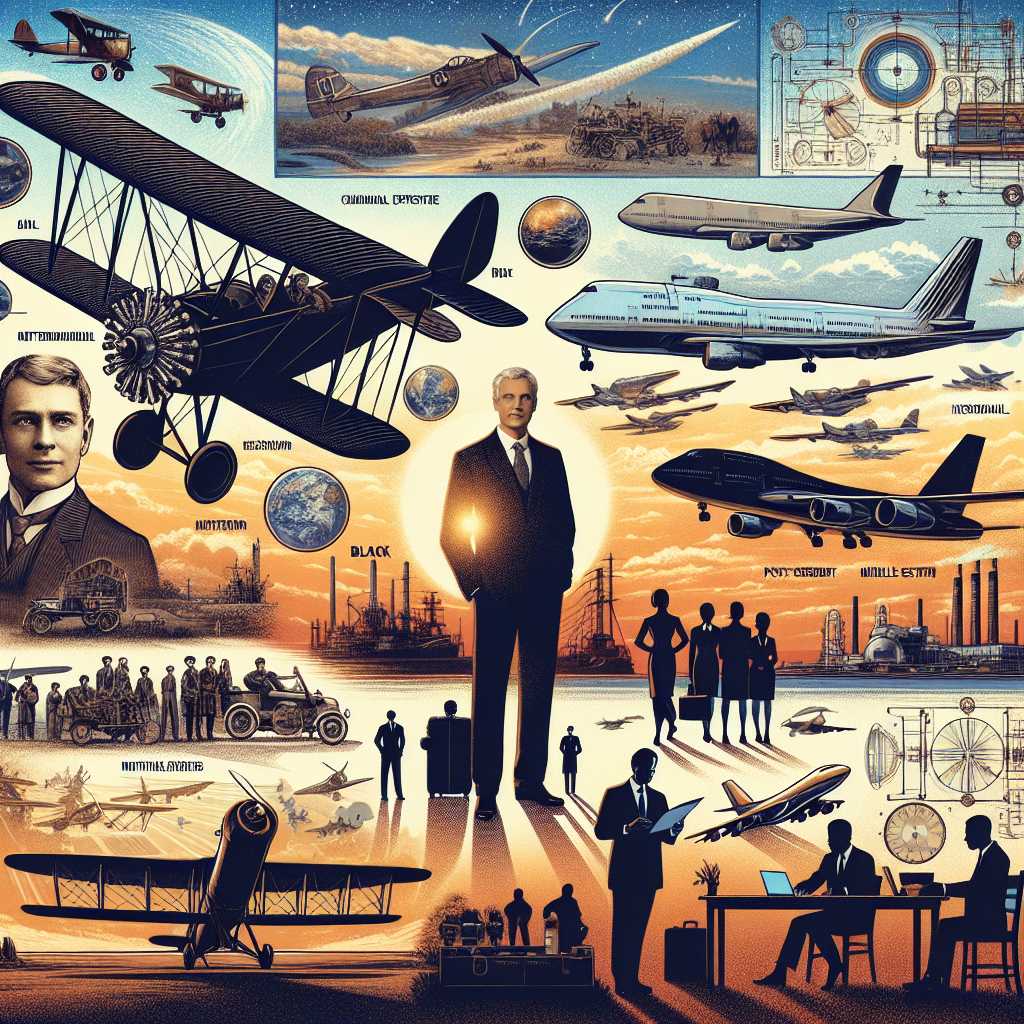The Storied History and Modern Challenges of Boeing
Boeing stands as one of the most significant companies in the aerospace and defense sectors, a behemoth birthed from humbler origins more than a century ago. Both accolade-laden and periodically controversy-struck, Boeing’s journey is marked by innovation, resilience, and adaptation to changing markets and geopolitical landscapes. This extensive article aims to provide a comprehensive view of Boeing as a company, detailing its origins, evolution, vital milestones, recent challenges, and its outlook within the industry.
The Beginnings of Boeing
William E. Boeing founded the company in 1916, commencing what would be a defining journey within aviation’s nascent period as Aero Products Company. It wasn’t long before it became known as Boeing Airplane Company. Early successes included training aircraft for World War I and the Model 1, or B&W seaplane. Innovation was ingrained in the company ethos from the outset, situating Boeing as a formidable player in aviation’s ascendancy.
Expansion and Warfare: Boeing’s Growth Spurt
World War II signified a turning point for Boeing, transforming it into a juggernaut of military aircraft production—bolstering efforts with renowned models like the B-17 Flying Fortress and the B-29 Superfortress. The end of World War II brought challenges with peacetime re-adjustments, but Boeing seamlessly transitioned into commercial airframes with stratocruisers and eventually jets, illustrating its strategic agility.
Entering the Jet Age: The 707 and the 747 Revolution
Boeing virtually scripted the plotline for modern air travel with the development of jet aircraft. The 707 shrunk our vast planet, making transoceanic flights faster and fueling a surge in commercial aviation. However, it was the introduction of the iconic Boeing 747—affectionately termed the “Queen of the Skies”—that took both public imagination and aerospace engineering to unprecedented heights. It became symbolic of air travel’s promises during the second half of the 20th century.
Diversification: Mergers and Acquisitions
To steady itself against market fluctuations and expanding frontiers in aerospace, Boeing merged with McDonnell Douglas in 1997. This strategic move not only broadened Boeing’s operations in both civilian and military sectors but also integrated substantial aerospace technology from its counterpart.
Recent Challenges: Setbacks and Recovery Plans
The rise has not been without falls; recent years have tested Boeing’s mettle more than ever before. Challenges with the development of their 787 Dreamliner model due to technical setbacks posed significant setbacks both financially and regarding market trust. Further aggravating its stance were two crashes involving their new 737 MAX jetliner leading to prolonged grounding globally amidst crisis over software malfunctions directly correlated to these tragedies.
Navigating Trouble: The 737 MAX Crisis
The evasion of catastrophe is integral to aviation; hence, when lapses lead to loss of lives—as manifested in two heart-breaking crashes involving 737 MAX—scrutiny abounds. Industry experts and regulators demanded sweeping changes in regulatory compliance, design ethics reviews, overhaul of internal culture eclipse sales prowess among consumers wary of flight safety integrity.
Looking Ahead: Focus on Technology and Sustainability
Boeing’s path ahead is paved with technological breakthroughs aimed at carbon-neutral flights—investments into electric and hydrogen propulsion systems demonstrate this requisite pivot towards sustainability. Another integral component comprises stepping up theirl autonomous systems depth—a critical differentiator within future aerospace arenas.
The Commercial and Defense Spectrum: Multiple Avenues for Innovation
Trade secrets reside within spacecraft like the CST-100 Starliner anticipated to revamp human spaceflight locales drastically through a collaboration with NASA. On earth, defense contracts lend financial buffers against market instabilities; serving nations globally through multi-role fighters or airborne early warning systems depicts brand multifacetedness beyond mere commercial sectors.
Notes
Image Description: A montage showing key moments from Boeing’s history might feature an earlier photograph of founder William E. Boeing standing with a biplane; a bird’s-eye view capturing rows of iconic airplanes such as the B-17 Fighter or 747; operational images against post-merger shots portraying multinational employee integration at work; followed by visuals that represent future endeavors spanning advanced energy propulsion system testing or sleek emblings on starbound crafts vis-à-vis earth-bound jet wings silhouetted by a sunset dateline — symbolizing legacy translucence through time’s aviation passage.
